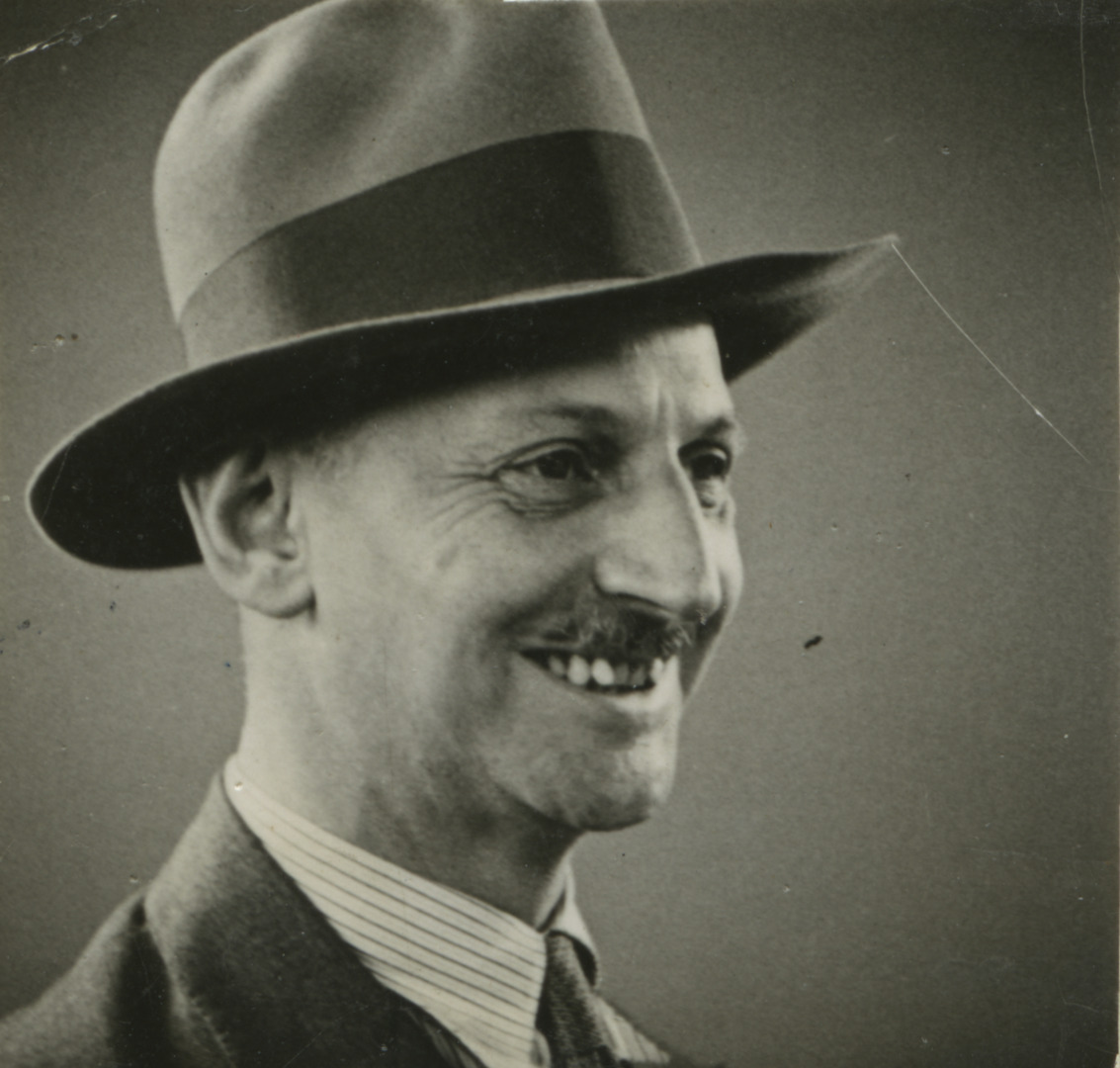Otto Frank
Otto Frank was the father of Margot and Anne Frank.
Otto Heinrich Frank was born on Sunday, 12 May 1889 in Frankfurt am Main, the son of Kaufman (merchant) Michael Frank and Alice Betty Frank-Stern.[1] Otto was the second child of a family of four children, all born in Frankfurt am Main. He had two brothers, Robert Hermann and Herbert August, and a sister named Helène. At the time of Otto Frank's birth, the Frank family lived at Gärtnerweg 58 in Frankfurt am Main.
The Jewish Frank family belonged to the wealthy circles of Frankfurt.[2] Otto's father Michael managed to set up a successful banking business in the last decades of the nineteenth century. The family was a typical product of the German Bildungsbürgertum. After attending the Lessing Gymnasium, Otto went to the University of Heidelberg for a summer semester, where he took art history classes. After this he completed an apprenticeship at the Ferdinand Sander bank in Frankfurt. Then he left for New York. He worked as an intern at Macy's and at a bank in the Financial District. Back in Germany, he worked for Fenestra, a manufacturer of various steel constructions and industrial installations. After the outbreak of World War I, Otto worked in a horseshoe factory before joining the army.[3]
In August 1915, he joined the Third Regiment Fussartillerie in Mainz. After his training, his unit ended up in the area of Bapaume. Otto was a telephone operator and observer, so he was at some distance from the actual battle line. After his demobilisation he took over the management of the family bank. The company had fallen on hard times due to the economic and political chaos in Germany. In 1923 Otto and some relatives in Amsterdam founded two companies in the financial sector. Jo Kleiman was involved in both companies as managing director and deputy manager.
In 1925 Otto married Edith Holländer. Her family had a business very similar to Fenestra. The couple had two daughters, Margot and Anne. The economic situation worsened after 1929. The political climate in Germany also deteriorated rapidly. After Hitler's rise to power, Otto and his family moved to Amsterdam. In the summer of 1933 Otto founded the Nederlandsche Opekta Maatschappij. In December 1933 he became a supervisory director of the 'Centrale Maatschappij voor Handel en Industrie', of which Kleiman was a director. At the end of the 1930s, an attempt to set up a business in England came to nothing. The 'Centrale Maatschappij' disappeared, after which Otto and Kleiman concentrated on building up Pectacon.
In the early stages of the war Otto tried to emigrate with his family to the United States, which failed due to the impossible procedure and bureaucracy. When the persecution measures increased, the plan to go into hiding was born. At Kleiman's initiative, the Secret Annex was made ready for this. The family moved into the hiding place on 6 July 1942.
Otto was the only one of the eight people in hiding to return from Auschwitz after the arrest and deportation. He resumed his work and also did a lot to place orphaned Jewish children with relatives or foster families. He also edited Anne's diary and made sure it was published.[4] He saw Anne as a representative of all the murdered Jewish children and hoped that her diary would bring mankind to its senses.
After his return Otto lived with Miep and Jan Gies for seven years. He then moved to Basel and married Elfriede Markovits, who had had similar war experiences. He continued corresponding until an advanced age about Anne and her world of ideas, especially with young people from all over the world. He died in a Swiss hospital at the age of 91.
Footnotes
- ^ Anne Frank Stichting, Anne Frank Collectie, Otto Frank Archief, reg. code OFA_058: Geburtsurkunde Standesamt Frankfurt am Main I nr. 1789 (afschrift, 19 oktober 1953). Op de akte staat verder vermeld dat beide ouders israëlitisch en in Frankfurt woonachtig zijn.
- ^ For biographies, see: Carol Ann Lee, The hidden life of Otto Frank, London: Viking, 2002; Aukje Vergeest, Anne Frank in the Secret Annexe: who was who?, Amsterdam: Anne Frank House, 2015.
- ^ H.P. van den Aardweg, J.P.J.C. Hüllstrung (red.), Persoonlijkheden in het Koninkrijk der Nederlanden in woord en beeld. Nederlanders en hun werk, Amsterdam: Van Holkema & Warendorf, 1938, p. 491.
- ^ Karen Bartlett. The diary that changed the world: the remarkable story of Otto Frank and the diary of Anne Frank, London: Biteback Publishing, 2022; Sandra van Beek, Geschiedenis van het dagboek: Otto Frank en Het Achterhuis, Amsterdam: Uitgeverij Pluijm, 2022.
Subjects (31)
- Applam Fruit Products Company Ltd.
- Arrest and betrayal
- Aufbau
- Auschwitz I: the men in the Stammlager
- Fabrik Fay’s Sodener Mineralpastillen
- Gies & Co., N.V. Handelsvereeniging
- Hermann van Pels - work at Pectacon
- Hermann van Pels - work in Amsterdam
- The diary of Anne Frank
- Daily life in camp Westerbork
- Johannes Kleiman - work at Opekta
- Johannes Kleiman - work at Pectacon
- Philosophy of life, Otto Frank
- Names of Otto Frank
- Nederlandsche Opekta Maatschappij N.V.
- People hiding in the Secret Annex
- Otto and Anne Frank
- Otto and Margot Frank
- Otto Frank and the attacks on the authenticity of the diary
- Otto Frank and the film 'The Diary of Anne Frank'
- Otto Frank and the Liberal Jewish Congregation
- Otto Frank and the publication of Anne's Fables and Short Stories
- Otto Frank and the translations of Het Achterhuis
- Otto Frank and the manuscript of Anne's diary
- Otto Frank and the play 'The Diary of Anne Frank'
- Otto and the typescript of Anne's diary
- Otto Frank in World War I
- Pectacon N.V., Handelsmaatschappij
- Holidays in Sils-Maria
- Leisure activities, Otto Frank
- 'Weerklank' (Resonance) - Otto Frank and reactions to the diary
